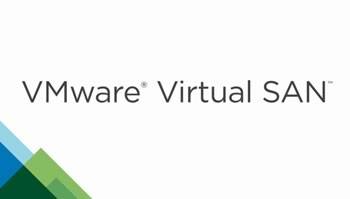Introduction to vSAN Witness Appliance
As SDDC (Software Defined Datacenter) offerings from VMware are continuing to mature with Virtual SAN 6.1, VMware announced two new great features i.e vSAN Stretched Cluster and 2 – Node vSAN Cluster. In a stretched or 2-node cluster, to maintain the quorum, a dedicated witness host is required. As the purpose of the witness host is only to store virtual machine witness components to avoid a split brain situation in case of an host failure there is not much compute which is required to be available on the witness host. You can configure a physical host or a virtual appliance to work as Witness. Leveraging vSAN Witness virtual appliance gives a signification cost saving for the customer wish to deploy a vSAN Stretched Cluster or 2-Node cluster ROBO as Witness Virtual Appliance comes up with required licenses where as you need to have to buy separate licenses in case you want configure physical server as a Witness host. You cannot share the witness appliance with another stretched cluster or with a 2-Node Configuration.A witness appliance cannot be shared between configurations; it is a 1:1 relationship with a stretched cluster or with a ROBO configuration.
Minimal Requirements to Host the vSAN Witness Appliance
- The vSAN Witness Appliance must on an ESXi 5.5 or greater VMware host backed with any supported storage (vmfs datastore, NFS datastore, vSAN Cluster).
- Networking must be in place that allows for the vSAN Witness Appliance to properly communicate with the vSAN 2 Node Cluster.
Bandwidth requirements Between 2 Node vSAN and the Witness Site
As Witness Appliance don’t hold any Virtual Machine data, it only hold the metadata of the VM components like VM Home, Swap Object, Virtual Disk, and Snapshots. So bandwidth requirement between the Witness Site and Data Site is not calculated the same way we do for bandwidth requirement between Data Site (Stretched Cluster)
The required bandwidth between the Witness and each site is equal to ~1138 B x Number of Components / 5s The 1138 B value comes from operations that occur when the Preferred Site goes offline, and the Secondary Site takes ownership of all of the components.
Deploying a Witness Appliance
When deploying the vSAN Witness Appliance, there are 3 potential deployment options: Tiny, Normal, & Large. These deployment profiles all have 2 vCPUs, 1 vmdk for the ESXi installation, 1 vmdk for the vSAN cache device, and at least 1 vmdk for the vSAN capacity.
Deploying New Witness Host in case of failure
This concludes the deployment of VMware vSAN Witness Appliance. Hope this will be informative for you. Please share if you find worth sharing it.
